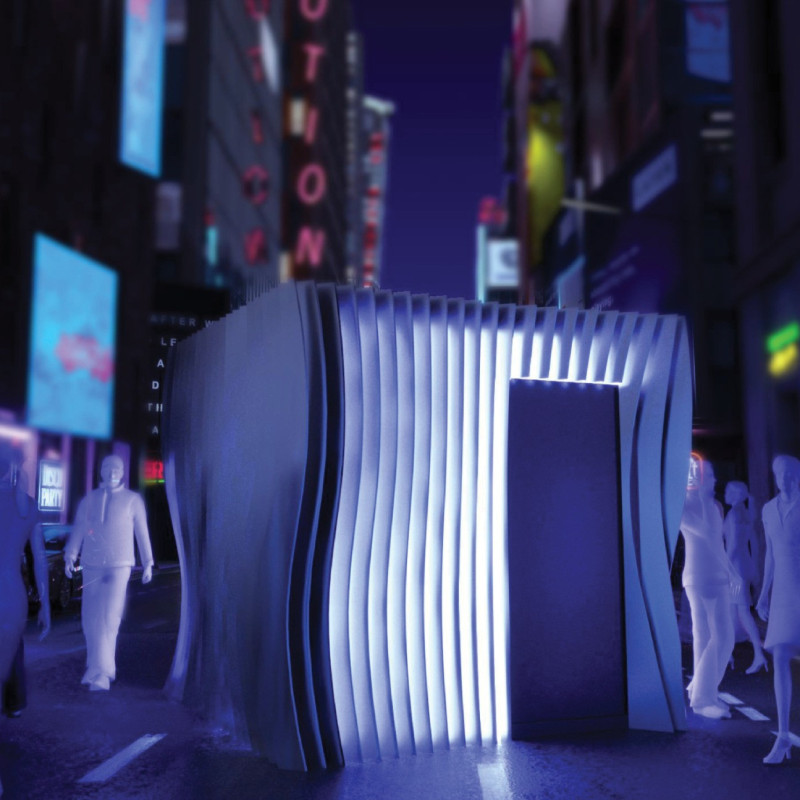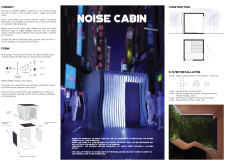5 key facts about this project
The NOISE CABIN is an architectural response to the stress created by sound and digital noise in urban settings. Located in Tokyo, a city known for its constant noise and activity, the cabin offers a peaceful space for individuals to reflect. Its design concept encourages a new relationship with noise, suggesting it can serve both as a challenge and a source of calm.
Design Concept
The cabin features two main layers. The outer core represents tension and the chaotic nature of city sounds that can easily overwhelm people. In contrast, the inner core is designed to provide a refuge, highlighting how noise can be perceived differently. This design aims to change how people interact with their surroundings, inviting them to experience tranquility amid chaos.
Materials and Construction
Construction involves a clear five-step process. The inner core is made using mass timber in an origami style, which allows for a strong yet visually interesting structure. The internal finish uses cork and moss, which not only enhance the aesthetics but also improve sound insulation, creating a more pleasant environment inside.
Acoustic and Functional Elements
To handle noise effectively, the design incorporates piezoelectric materials that absorb sound. The outer core is finished with steel panels that add strength and durability, allowing the cabin to withstand the demands of urban life. This combination of materials supports the cabin's function as a calming retreat.
User Experience
Inside, there is a designated area for digital devices, enabling users to recharge while experiencing a break from technology. During therapy sessions, a steady white noise envelops the space, fostering a relaxing atmosphere ideal for reflection. The NOISE CABIN stands as an exploration of noise not just as a source of disturbance but as a potential pathway to mindfulness and peace.
The clean lines and thoughtful arrangement of the cabin invite users to consider how noise shapes their daily lives. The design subtly encourages a deeper connection to the urban soundscape, shifting the focus from annoyance to understanding.



















































